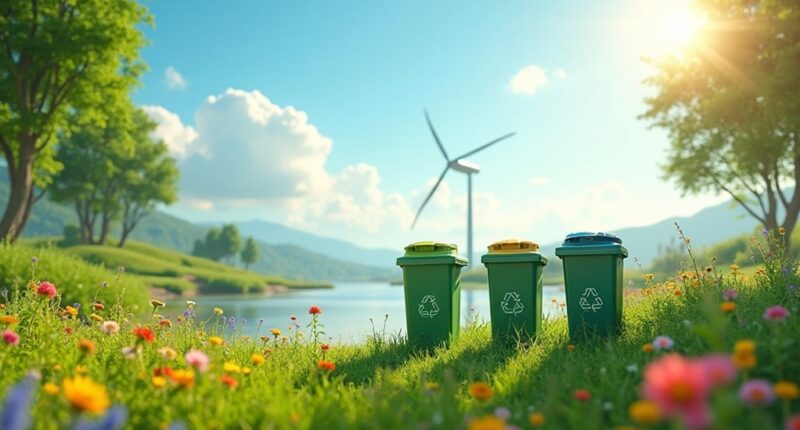The circular economy is quickly becoming the future of business, reshaping how companies utilize resources. It’s all about turning waste into gold, focusing on reuse, recycling, and reducing what ends up in landfills. This innovative approach can save businesses money, cut emissions, and even lead to happier customers with longer-lasting products. Think of it as a game-changing play in the business playbook. Curious about how this thrilling transformation unfolds? Stick around and discover more!
The Promise of the Circular Economy
In a world where “take-make-dispose” feels more like a bad breakup than a sustainable practice, the circular economy emerges as a revitalizing change, inviting businesses to rethink their approach to resources. This innovative model swaps out the old habits of wastefulness for a smarter strategy involving reuse, recycle, and reduce.
Picture it as a never-ending loop of resource happiness, where materials are kept in circulation and waste is given the boot. At its core, the circular economy aims to create closed-loop systems, turning yesterday’s trash into tomorrow’s treasure.
By focusing on designing products for durability, repairability, and recyclability, companies are not just saving the planet; they’re also saving themselves money. Imagine businesses slashing production costs, optimizing resources, and even generating an estimated $4.5 trillion in new economic output globally. It’s like finding a hidden stash of cash in your couch cushions, but on a much grander scale. The circular economy provides cost savings for businesses through efficient resource use. One of the key principles of circularity is to reduce waste and resource use from the production process.
Design for durability and recyclability not only saves the planet but also unlocks a treasure trove of economic benefits for businesses.
Moreover, the environmental benefits are nothing to sneeze at either. By adopting circular practices, companies can considerably reduce greenhouse gas emissions, lower plastic pollution, and minimize ecological damage. It’s as if Mother Nature herself is giving a thumbs-up.
And for consumers? The perks are plentiful. With increased product durability and access to affordable goods through sharing models, everyone wins.
However, like any good story, challenges linger. Businesses face initial investment costs that can feel like climbing a mountain, with some regions lacking the necessary infrastructure.
And let’s not forget the consumer mentality still tied to “buy and dispose.” Convincing folks that reusing is the new black might take some time.
Yet, the potential for collaboration and innovation is immense. By joining forces with governments and other businesses, companies can pave the way for a sustainable future. Ultimately, the transition requires a fundamental product redesign approach that considers the entire lifecycle of materials from the beginning.









